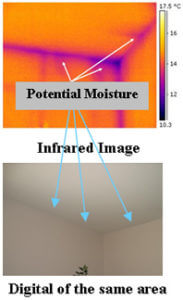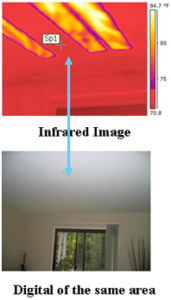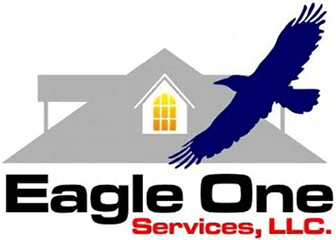What Are Thermo Graphic Investigations?


Convection of heat can be the result of heating a liquid or gas and its affect on a surface. This is the principal of determination of a roof membrane failure or the lack of filling hollow concrete masonry units. Depending on the source of heating or cooling, the image will show light or dark depending on parameters of the imaging.
Infrared or thermal images when provided to the client can be used to determine a number of areas of concern within a building, whether it’s a small residence or a manufacturing plant. The report delivered will provide both a digital image and the associated IR image with a description of the area of concern, the potentials of and a recommendation for further action if required.
- Energy efficiency of the building. This is of special concern to the owner with the high cost of energy use. Heat loss in connections of the ducting can add hundreds and sometimes thousands of dollars to the cost of heating and cooling of a building.
- Determination of the effectiveness of radiant heating systems. Ceiling panel malfunctions or leaks within a liquid line located in the concrete slab floors.
- The installation or lack thereof of wall and ceiling insulation.
- Moisture intrusion at walls, ceilings, and floor surfaces that can lead to the growth of mold.
- Ply separation on low slope roof systems or balconies.
- Overheating electrical components.
- In some cases it can even be used to locate subsurface piping.
- In manufacturing plants an overheating of bearings can be detected long before a complete failure. This can seriously affect the bottom line if a motor goes out and the manufacturing line has to be shut down.
General Cost
Costs to investigate a property vary widely due to the conditions that are to be investigated. Below are some general fees to visit the site one time only. If additional visits are required by either the client or as a result of findings, you should expect that additional fees will apply. Please understand that the fees below are estimates only and are applied in addition to the minimum fee as stated.
| Verification of the placement of radiant heating panels | $100.00 |
| Investigation for window or door flashing | $100.00 |
| Moisture intrusion | $125.00 |
| Energy loss around the ducting | $100.00 |
| Hourly rate when required due to several concerns | $175.00 |
| Use of Blower Door for any investigation | $300.00 |
| Travel costs | $0.65 |
| Minimum charge | $350.00 |
If any additional equipment or outside services are required for the investigation process, Eagle One Services LLC can make those arrangement and additional fees will be applied plus a 2% markup.

